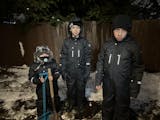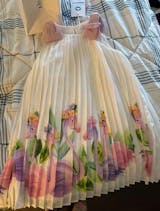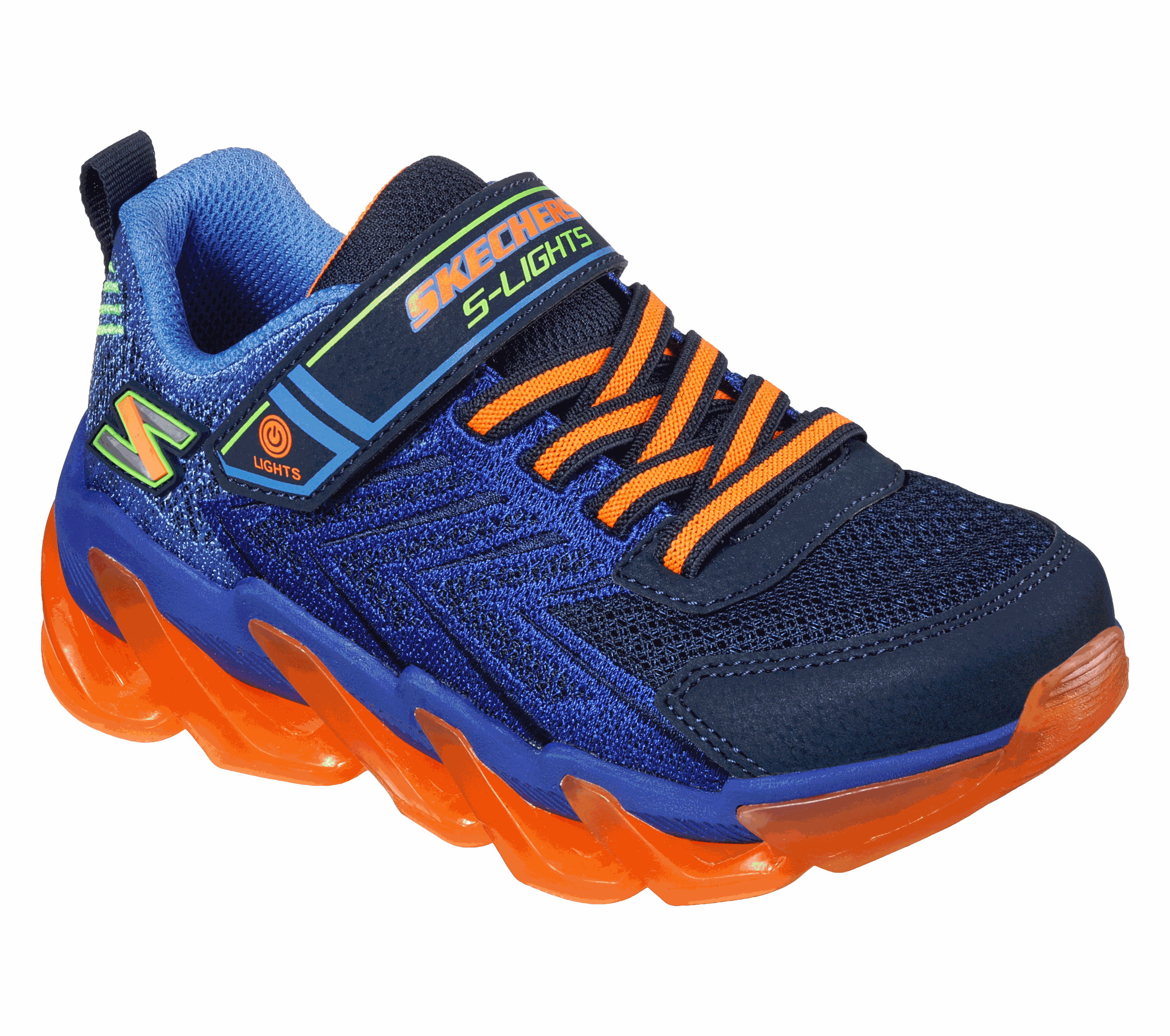Winter with little ones is a mix of magic and logistics. First flakes on a stroller walk, tiny boot prints in fresh snow — and a lot of choices about warmth, safety, and comfort. This safety-first, expert guide shows you how to choose the right snowsuit format, layer without overheating, evaluate technical features, size for growth, and assemble real-life outfits for daycare, stroller loops, and first snow play. Throughout, you’ll find curated internal links to help you shop quickly and confidently.
Start here if you want the fastest path: browse Baby Girls Snowsuits for cozy, weather-ready picks sized for 0–36 months. We add boy options later for balance.
Quick Picks (fast decisions for busy parents)
-
Stroller & daycare MVP: A slim one-piece pram suit with foldover mitts/booties. It slides over soft base layers and stays comfy during stroller naps.
-
For car seats: Choose a car-seat snowsuit profile (low bulk through the torso) so harness straps fit snugly. Buckle first, then add warmth over the straps — blanket or cover — when you step outside.
-
Active toddlers (first snow play): A breathable baby winter suit that blocks wind and slush without trapping sweat, so they can wobble, crawl, and try a tiny snow angel.
-
Wet, slushy climates: Prioritize a weatherproof outer (water-resistant or waterproof) with taped critical seams, storm flaps, and snug gaiters.
Keep faces and fingers happier in wind and spindrift with cold-weather add-ons from Winter Accessories. Low stock — order today.
Safety & Compliance First (what matters most)
Warmth is important. Safe restraint is non-negotiable. Bulky padding under a harness can compress in a crash and create slack. A slim car-seat snowsuit keeps the torso profile lower to help straps fit correctly. Always do the pinch test per your car-seat manual. Buckle first, then layer warmth over the harness (blanket or cover) when you exit the car.
Other cues worth checking:
-
Neckline & hood: Avoid bunching at the neck. Hoods should not yank backward when arms lift.
-
Hand/foot coverage: Foldover mitts and booties reduce lost pieces and keep tiny digits warm in the stroller.
-
Breathability: Babies and toddlers can’t manage layers mid-activity; breathable constructions mitigate sweat-chill when you transition indoors.
-
Mobility: If the suit blocks a squat or arm lift, mornings turn into a wrestling match.
For coordinated outfits that make daycare mornings calmer, set up a base + mid + hat bundle. Try a pre-paired set to speed changes from Baby Boys Sets or Baby Girls Sets
The Baby & Toddler Snowsuit Landscape (what’s what)
You’ll encounter a few common formats — each serves a clear job:
-
Bunting / one-zip bag (newborn stage)
A cocoon-style infant bunting that keeps toes together. Great for stroller naps and quick dashes. Not for under-harness use unless your manual explicitly permits and fit is verified. Many families choose a slim car-seat snowsuitfor vehicle rides. -
One-piece pram suit (0–24M)
Full-coverage one-piece pram suit with deep zippers and foldover covers. The go-to for daycare runs, stroller loops, and quick playground stops. Choose low-bulk warmth so it layers cleanly. -
Lightly insulated baby winter suit (up to ~3T)
A mobile baby winter suit for early walkers. Look for breathable, weather-blocking shells and gentle articulation so knees can bend and hands can explore. -
Two-piece for older toddlers
This guide focuses on 0–36 months, but some toddlers graduate sooner to modular jacket and snow pants, especially for bathroom independence. Many families move toward a kids winter suit set in preschool.
Quick Comparison: Baby Snowsuit Types
1) One-piece pram suit
Primary purpose: Stroller walks, daycare drop-offs, short park stops.
Temperature guideline: 0 °C to −20 °C (depends on fill).
Weatherproofing: Wind-blocking; often light water resistance.
Mobility: Good (articulated elbows/knees help).
Car seat note: Slim versions fit better under the harness — buckle first, then add a blanket over the straps.
Change speed: Fast (deep zippers; foldover hand/foot covers).
Growth features: Sometimes has extendable cuffs.
Best ages: 0–24 months.
Pros: One-and-done coverage; cozy for naps.
Watch-outs: Can run warm indoors — pick breathable linings to reduce sweat-chill.
2) Car-seat snowsuit
Primary purpose: Vehicle rides and door-to-door transitions.
Temperature guideline: −5 °C to −20 °C (low-bulk insulation).
Weatherproofing: Wind + light precipitation protection.
Mobility: Good.
Car seat note: Designed with a low-bulk torso to help achieve a snug harness fit (always verify).
Change speed: Fast.
Growth features: Some models include grow cuffs.
Best ages: 0–24 months.
Pros: Safer torso profile under the harness; less bulk.
Watch-outs: Not ideal for very wet/slushy play — use a blanket over the straps after buckling for extra warmth.
3) Baby winter suit
Primary purpose: First snow play, short sled sessions, active toddlers.
Temperature guideline: −10 °C to −20 °C (breathable insulation).
Weatherproofing: Weatherproof outer; look for taped seams and gaiters.
Mobility: Very good (articulation at knees/elbows).
Car seat note: For outdoor time only; remove bulky layers for the car seat.
Change speed: Moderate.
Growth features: Often has extendable cuffs and an adjustable waist.
Best ages: 6–36 months.
Pros: Strong balance of warmth, breathability, and durability; reinforced knees/hem.
Watch-outs: Heavier than a pram suit; may feel warm indoors.
4) Rain suit / light shell
Primary purpose: Shoulder season, windy/splashy days, puddle play.
Temperature guideline: +8 °C to −5 °C with base/mid layers.
Weatherproofing: Waterproof or water-resistant plus wind protection.
Mobility: Excellent.
Car seat note: Usually remove for the car seat; layer it after the ride.
Change speed: Fast.
Growth features: Minimal.
Best ages: 6–36 months.
Pros: Blocks wind/slush without overheating; great for puddles.
Watch-outs: Not warm on its own — pair with appropriate base/mid layers.
Tip: If your child overheats and then gets cold, prioritize breathable suits and unzip briefly during transitions. If you need bulky layers to feel okay, you likely need a warmer outer or better wind/water protection.
Fabric & Construction 101 (why some suits just work better)
Shell (outer fabric). Choose a weatherproof outer — wind blocking with water resistance or waterproofing. In slush-prone towns, waterproof + taped seams is worth it.
Insulation. The warmth engine. Modern fills deliver low-bulk warmth, trapping heat without “marshmallow” stiffness. Low bulk matters for comfort and buckle fit.
Breathability. Reduces sweat build-up that causes chills once you go indoors. Breathable suits keep a steadier microclimate.
Lining. Soft, brushed interiors help sensory-sensitive littles. Smooth lining slides over base layers without snagging.
Reinforcement & seams. Knees, seat, and hems take the abuse. Reinforced zones (often Cordura) and taped critical seams prolong the season and limit leaks.
Closures. Chunky, glove-friendly zippers and two-way openings make diaper changes and quick cool-downs easier.
On milder days you may skip heavy insulation for a lighter top layer — try a throw-on from Girls Coats & Jackets when you want wind block without extra bulk.
Warmth Guide by Temperature & Weather
Use this as a starting framework and tune for climate and activity:
0°C to −10°C (32°F to 14°F)
-
One mid-weight one-piece pram suit over breathable bases.
-
Add a hat covering ears and fold the integrated mitts/booties.
−10°C to −20°C (14°F to −4°F)
-
A warmer baby winter suit or slim car-seat snowsuit with breathable insulation.
-
Base: a long-sleeve pajama set or lightweight merino top + leggings.
-
Windy day? Add a thin mid-layer hoodie.
Below −20°C (−4°F and colder)
-
Choose the warmest suit with storm-ready fabric; manage outdoor time in shorter bursts.
-
Bring backup mitts and rotate pairs to stay dry.
Wet/slushy
-
Waterproof shell, taped seams, and gaiters beat raw insulation. Dry kids stay happier — and outside longer.
Comfort starts at the layer touching skin. For breathable girls’ bases that hold warmth without sweat-chill, see Girls Pajamas. For boys, rotate soft, easy-change sets from Boys Pajamas.
Fit & Sizing (reduce returns, increase comfort)
Measure, don’t guess. Height anchors baby/toddler sizing. Then check chest/waist/hip to ensure space for a base and, if needed, a thin mid-layer.
Mobility test. In the zipped suit, try three moves: arms overhead, a self-hug, and a deep squat. If the hood pulls back or the torso tugs, adjust size or patterning.
Grow features. Extendable cuffs and adjustable waists bridge spurts and stretch the season.
Hands & feet. Foldover covers are gold in the stroller stage. For walkers, pick slim booties or early boots that fit cleanly with gaiters.
Buckle check. If using a suit in the vehicle, verify a snug harness every ride. Slim car-seat snowsuit profiles help. Always follow your car-seat manual.
Layering That Works (and avoids overheating)
Base (touching skin). Soft, breathable knits wick moisture and stay comfy for naps and pickups. A two-piece pajama set makes changes faster.
Mid-layer (optional). A lightweight hoodie or quilted vest adds warmth for wind and deep freeze. Avoid heavy cotton piles that trap moisture.
Outer. The suit blocks weather and holds warmth. If you need bulky layers to feel okay, the suit may not be warm enough or isn’t wind/water protective enough.
Accessories. A snug hat that covers ears, a neck warmer (safer than long scarves), and mitts with a good cinch keep warmth where it counts.
For quick, compliant warmth at pickup time, keep an easy top layer by the door — a go-to from Boys Outdoor Coats, Jackets & Gilet handles gusts without overheating.
Real-Life Scenarios & Outfit Formulas
1) Daycare dash (−8°C with wind)
-
Base: breathable pajamas.
-
Outer: warm one-piece pram suit with foldover covers.
-
Add: hat, neck warmer, mitts.
-
Tip: label everything — mitts vanish like socks.
2) Stroller walk (−12°C, sunny)
-
Base: pajama set + thin fleece mid-layer.
-
Outer: slim car-seat snowsuit for snug harness fit.
-
Add: blanket over legs once buckled; remove indoors.
-
Tip: check back-of-neck sweat and adjust layers.
3) First snow play (−6°C, slushy)
-
Base: long-sleeve tee + leggings.
-
Outer: baby winter suit with waterproof shell and gaiters.
-
Add: mitts with cinch; keep a spare pair in the pack.
-
Tip: short sessions prevent damp chills.
4) Shoulder season (2°C and drizzle)
-
Base: tee/leggings.
-
Outer: lighter jacket over a hoodie.
-
Add: waterproof booties if puddles call.
-
Tip: crack a vent zip on uphill pushes.
For throw-on warmth girls actually keep on, rotate comfy mid-layers from Girl Sweaters, Sweatshirts & Hoodies,
Wardrobe Planning by Age
Newborn–6M
-
Prioritize soft linings and quick changes. Infant bunting for stroller naps. If you ride in vehicles, consider a slim car-seat snowsuit profile.
-
When you want a feminine palette or print story, shop Baby Girls Snowsuits for easy on/off designs.
6–18M (crawlers & early walkers)
-
Focus on mobility and abrasion resistance at knees and hems. A breathable baby winter suit with reinforcement survives slides and scoots.
-
For pre-paired outfits that speed mornings, explore Baby Girls Sets (girls) or Baby Boys Sets (boys).
18–36M (on the move)
-
Choose suits with articulation and extendable cuffs; plan the first real snow-play days.
-
Prefer a bolder palette or sportier cut? See Baby Boys Snowsuits for options that match activity and color preferences.
Value & Cost-per-Wear (why quality pays)
Good baby outerwear looks pricey until you count the wears: daycare, errands, weekend trips, park loops — often 5 days/week across a 14–16 week winter. That’s 70–80 wears in one season. Add sibling pass-downs or resale value and your cost-per-wear drops fast. Comfort also matters: better warmth and mobility mean fewer meltdowns and fewer aborted outings.
Care, Laundry, and Storage (keep it performing)
-
Brush off salt and slush the same day so stains don’t set.
-
Close zips/snaps before washing; use tech-friendly detergents and skip softeners.
-
Air dry when possible to preserve loft and shape.
-
Mid-season check: extend cuffs if needed; add interior patches at knees before holes.
-
Off-season storage: clean first; store dry in a breathable bag (not vacuum-sealed) to protect insulation loft.
Buying Checklist (printable)
-
Typical temps and wind in your area
-
Primary use: stroller/daycare vs snow play
-
Car-seat plan: car-seat snowsuit or blanket over harness
-
Fit room: base + thin mid-layer without squeeze
-
Mobility: pass the reach–hug–squat test
-
Details: foldover covers, gaiters, storm flaps, taped seams
-
Growth: extendable cuffs, adjustable waist
-
Accessories: hat, neck warmer, mitts (two pairs), warm socks
-
Care plan: tech-safe detergent, drying space
When temps jump or you need a quick door-to-car layer, a compact top layer helps — consider a lighter option from Girls Coats & Jackets or a wind-blocking piece from Boys Outdoor Coats, Jackets & Gilets.
Bottom Line
Babies and toddlers need warmth that fits their world: naps, buckles, starts and stops, surprise slush, and big feelings. The right outerwear balances low-bulk warmth, breathable weather protection, easy access for changes, and growth-friendly features — so you spend more time making snow memories and less time negotiating layers. Build from a breathable base, add a light mid-layer when needed, choose the outer that matches your climate, and keep accessories ready by the door. That’s how you win winter with little ones.
Shop our favorite snowsuits for babies and toddlers — ships next business day, check out now.
FAQ: Baby & Toddler Snowsuits
Are snowsuits safe in car seats?
Use a low-bulk car-seat snowsuit and follow your car-seat manual. Buckle first with snug straps, then add a blanket over the harness when you head outside.
Infant bunting vs one-piece pram suit — what’s the difference?
An infant bunting is a sack-style cocoon for stroller naps. A one-piece pram suit has separate legs with foldover hand/foot covers—better for early walkers and faster changes.
How many layers under a baby winter suit?
Usually one breathable base is enough; add a thin mid-layer on windy or very cold days. If you need multiple bulky layers, the outer suit may not be warm enough or lacks wind/water protection.
My toddler overheats then gets cold — what should I change?
Choose breathable constructions, unzip briefly during transitions, and swap heavy cotton for moisture-managing base layers to reduce sweat-chill.
When should we size up?
If cuffs are tight or the reach–hug–squat test fails, size up. Extendable cuffs and adjustable waists can bridge a growth spurt while maintaining mobility and comfort.
Can I machine-wash weekly?
Spot-clean often; launder as needed with technical-fabric-safe detergent. Avoid fabric softeners and air-dry when possible to preserve insulation loft and performance.




























